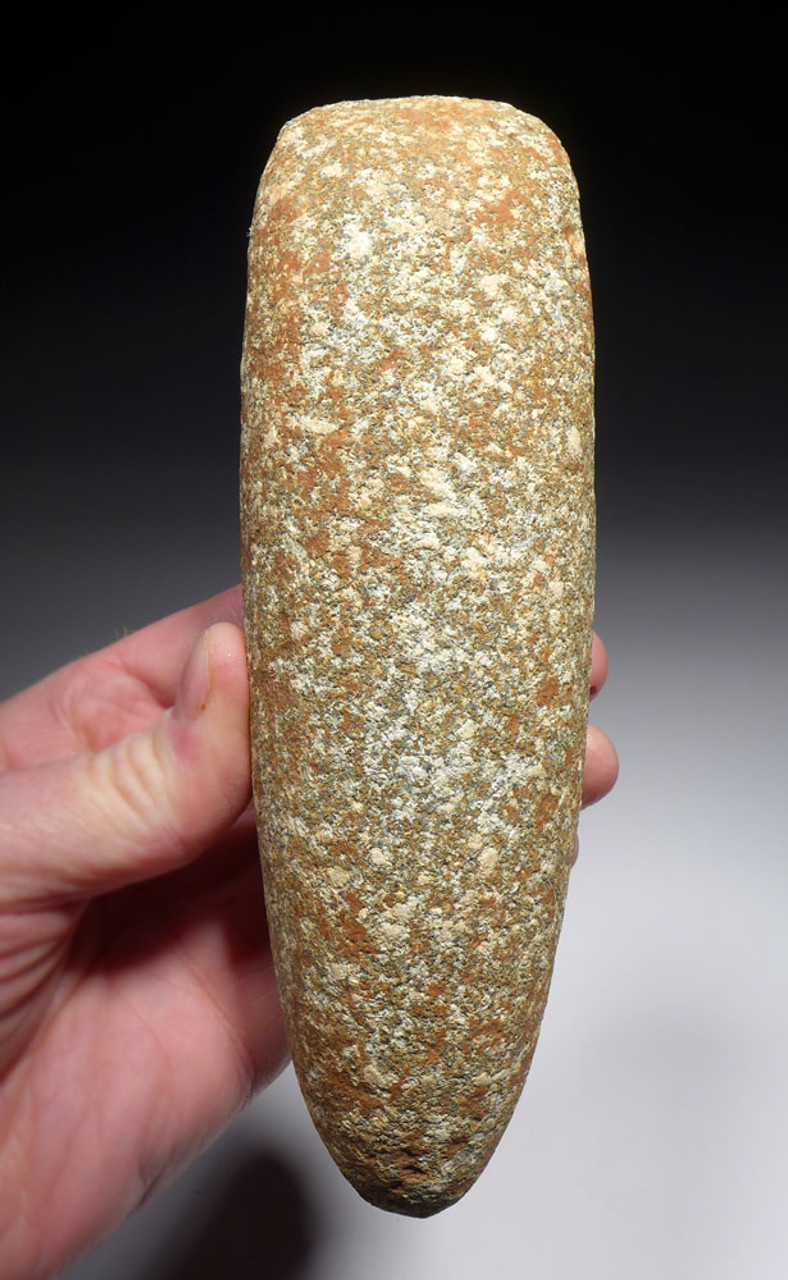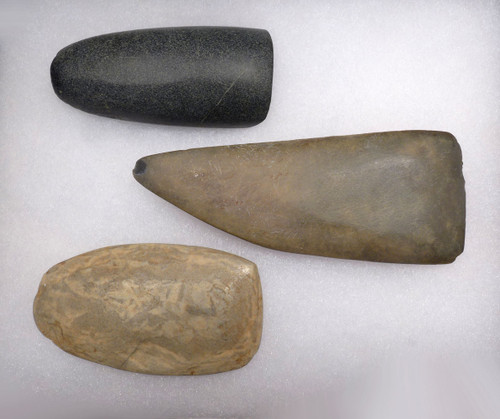Product Description
SEE MORE AFRICAN NEOLITHIC TOOLS AND ARTIFACTS
This large Diorite ground stone celt axe is from the African Capsian Neolithic culture. It was found on an exposed African Neolithic site in the Sahara Desert in Northwest Africa, and dates to over 5000 years ago. Celt axes like this are made by grinding a single stone into a cylindrical form with a bullet-shaped but end and a chisel-shaped chopping end. Axes like this were then hafted into wooden shaft handles. At this time, the majority of the region was deforested so an axe of this type would not have been used to fell trees. It could have been either a formidable weapon, or used to break the bones of cattle to get to the nourishing marrow. Depsite this culture being Neolithic, crop cultivation was uncommon and the societies were nomadic pastoralists, raising livestock as a predominant source of food and other resources.
With superb preservation and of maximum size, this spectacular example shows extensive mineral deposits and staining in the micro-crevices of the ground stone. It lacks any modern damage or alterations. This celt axe was selected out of hundreds and hundreds of inferior examples and represents the finest possible piece of its type - one of the best few of a large, life-long collection! Intact original mineral deposits and patina deep within the flake scars and micro-crevices of the flaking are signs of authenticity and age not found in modern forgeries often seen on the market.
 US DOLLAR
US DOLLAR
 EURO
EURO
 AUSTRALIAN DOLLAR
AUSTRALIAN DOLLAR
 CANADIAN DOLLAR
CANADIAN DOLLAR
 POUND STERLING
POUND STERLING


















